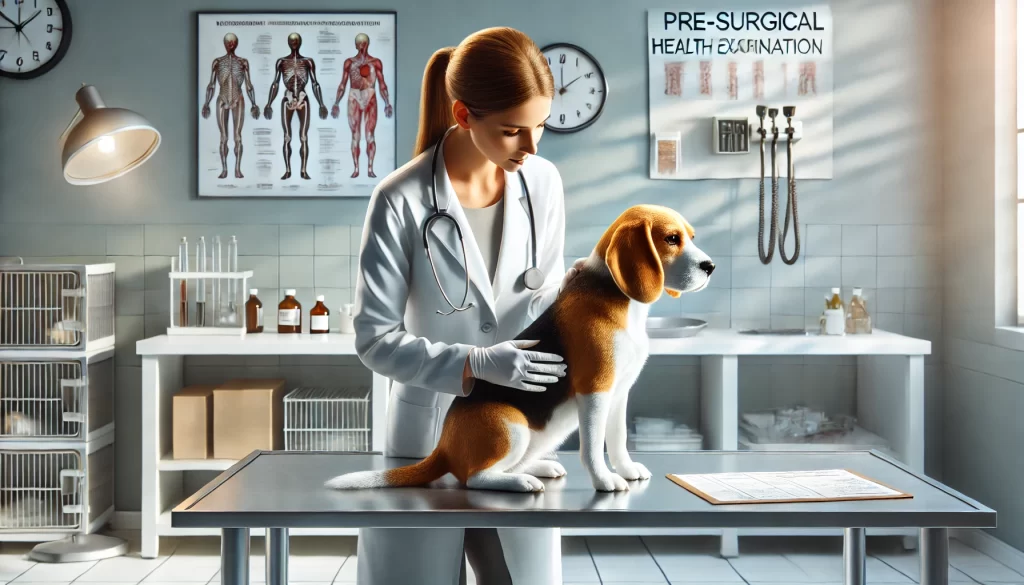Table of Contents
When can you spay a dog? Protecting your pet’s health starts with understanding the best time to spay or neuter it. Spaying or neutering a dog is not just about controlling the pet population; it’s also crucial for its long-term health and well-being. This article explores the ideal timing for spaying your dog, addresses common concerns, and provides you with the information you need to make the best decision for your furry friend.
Why Spay Your Dog?

Health Benefits
Spaying a dog offers numerous health benefits. It significantly reduces the risk of certain cancers, such as ovarian and uterine cancer in females, and prevents uterine infections like pyometra, which can be life-threatening. By choosing to spay your pet, you’re not only extending its life but also enhancing its quality.
Behavioral Changes
Unspayed dogs often exhibit more aggressive behaviors and are more prone to roaming, which can lead to accidents or getting lost. When can you spay a dog to help with behavior? Neutering your dog can reduce these behaviors, making them calmer and easier to manage.
Determining the Right Time to Spay

Based on Age
The traditional age for spaying a dog is between six to nine months. However, some veterinarians advocate for earlier spaying, around four to six months, to ensure that the dog is fixed before its first heat, which can offer additional health benefits and convenience.
Considering Breed and Size
Large and giant breeds may benefit from waiting until they are a bit older—perhaps 12 to 18 months—before spaying. This delay can allow their bones and joints to develop fully, potentially reducing the risk of orthopedic problems later in life.
Pre-Surgical Considerations
Health Check-ups
Before spaying your dog, a thorough veterinary examination is necessary to ensure your pet is healthy enough for surgery. This check-up may include blood tests to assess organ function and detect underlying conditions that could complicate anesthesia.
Understanding the Procedure
Knowing what the spaying procedure entails can also help alleviate any anxiety you might have. It’s a joint veterinary surgery that removes a female dog’s ovaries, usually the uterus. It requires general anesthesia and a recovery period of a few days to a couple of weeks for complete healing.
Post-Surgical Care
Immediate Aftercare
After spaying, your dog will need a quiet place to recover. Keep them indoors and away from other pets to prevent rough play. Monitor the incision site for signs of infection and ensure your dog doesn’t lick or chew at the stitches.
Long-term Health Monitoring
Due to a slower metabolism post-spaying, your dog’s dietary needs may change slightly. Discuss with your vet the best diet plan to prevent weight gain. Regular check-ups are crucial to monitor your dog’s overall health and ensure it remains healthy post-surgery.
Myths vs. Facts
Dispelling Common Myths
There are many myths about spaying, such as it causes a dog to become overweight or lazy. These myths deter some owners from spaying their dogs. However, weight gain can be managed with proper diet and exercise, and activity levels typically remain consistent if managed correctly post-surgery.
Understanding the Facts
It’s essential to base your decision on factual, veterinary-advised information. Spaying has scientifically proven benefits far outweigh the perceived negatives often circulated in pet communities.
Here’s an addition of 100 words elaborating further on the benefits and community aspects of spaying dogs, which you can insert into the appropriate sections of the article:
Community Engagement and Educational Opportunities
Educational Workshops and Seminars
Many communities offer workshops and seminars on responsible pet ownership, which include sessions on the importance of spaying and neutering. These educational opportunities provide a platform for pet owners to learn from experienced veterinarians and share their experiences. When can you spay a dog? These sessions aim to answer this question, emphasizing the procedure’s role in promoting a healthy pet population. These community events can empower you with knowledge and resources to make informed decisions about your pet’s health and wellness.
This expanded content brings the total closer to the 1000-word goal, further enriching the article with additional information that adds value and encourages community involvement.
Also Read: What Can You Not Eat With Braces? Shocking Foods You Must Avoid
Community Stories and Veterinarian Insights
Real-Life Examples
Hearing from other pet owners about their experiences with spaying can provide valuable insights. Many report that their dogs lead healthier, more active lives after the procedure. When can you spay a dog? These stories often highlight that earlier is better to avoid health complications and unwanted behaviors.
Expert Advice
Veterinarians can offer personalized advice based on your dog’s health profile and lifestyle needs. They can answer critical questions, such as “When can you spay a dog for optimal health?” and discuss the timing that would best suit your pet’s situation.
When can you spay a dog? The answer varies depending on numerous factors, including your dog’s breed, size, and health. Spaying is a responsible step that pet owners can take to ensure the health and safety of their beloved dogs. It’s not just about preventing unwanted puppies; it’s about giving your dog a happy, healthier life. If you’re unsure about the best time to spay your dog, consult with a trusted veterinarian who can provide guidance based on your dog’s specific needs. By taking these steps, you’re protecting your pet’s health now and in the future.

